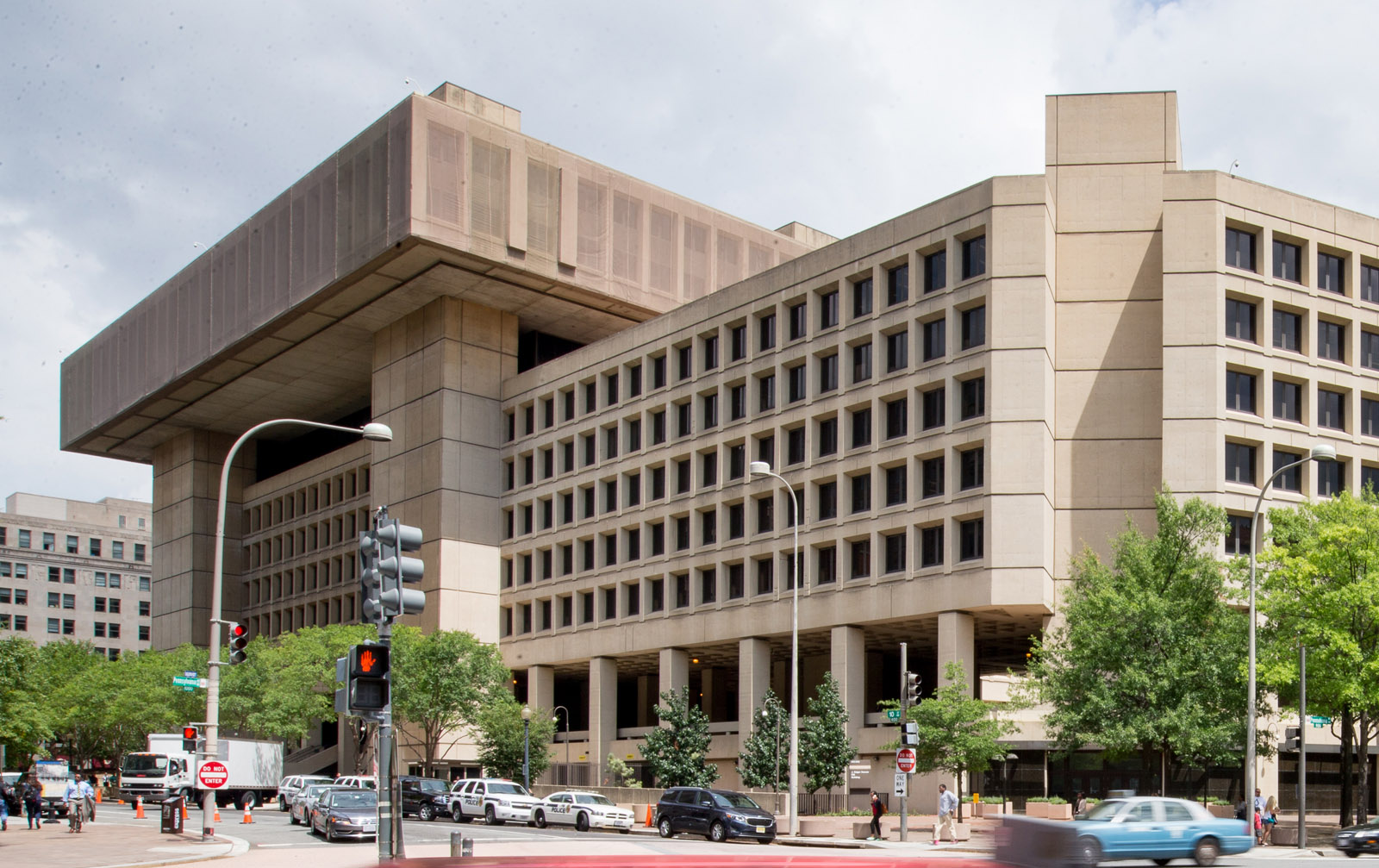This video is no longer available.
The first of approximately 700 89-foot-tall piles that will provide the foundational support of the reconstructed sea wall around D.C.’s Tidal Basin was pile-driven into place Thursday morning.
The ground shook nearby as a crane used pressure and vibration to drive the pile — painted gold for the occasion — through the silty bottom of the basin until it hit bedrock in a groundbreaking ceremony. The clanging of hammering the final 30-or-so feet of pile into the bedrock will be a noisy reminder of the Tidal Basin project, which is expected to take about a year and a half to finish.
The undertaking, which will also stabilize the sea wall along the Potomac River, is the most expensive project the National Park Service has ever designed, said Jeff Reinbold, superintendent of the National Mall and Memorial Parks.
”The original sea wall has probably been sinking from the very beginning,” said Reinbold. “It wasn’t anchored to bedrock, and by now, some areas around the Tidal Basin have sunk by as much as 5 feet — not 5 inches, 5 feet.”
The settling, combined with climate change, caused a sea level rise of more than a foot, meaning the Tidal Basin sea wall provided 6 feet less protection than originally designed, Reinbold said.
Local visitors and tourists have seen evidence of the deterioration of the sea wall.
”Restoring the wall to the historic functional height, we will eliminate the twice-daily flooding of the Tidal Basin walkways that have become commonplace over the past couple of decades,” said Jason Jimenez-Pisani, the civil engineer heading the project for the National Park Mall and Memorial Parks.
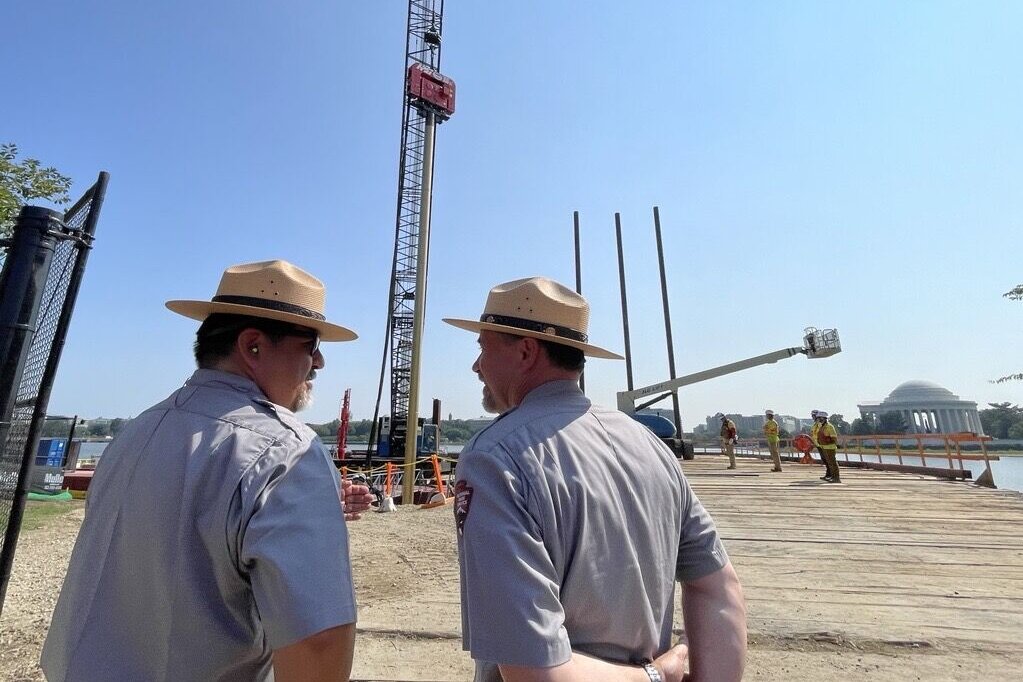
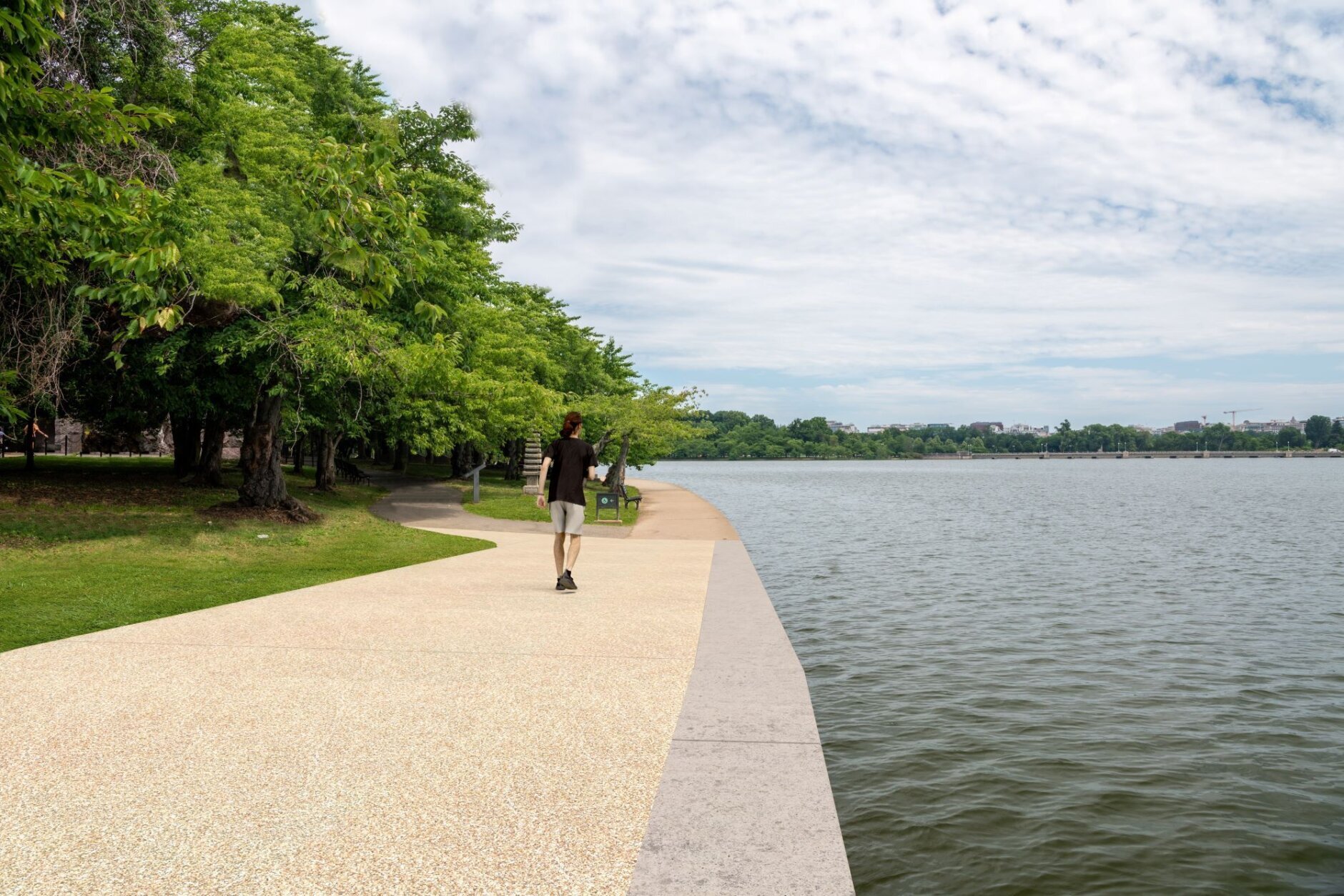
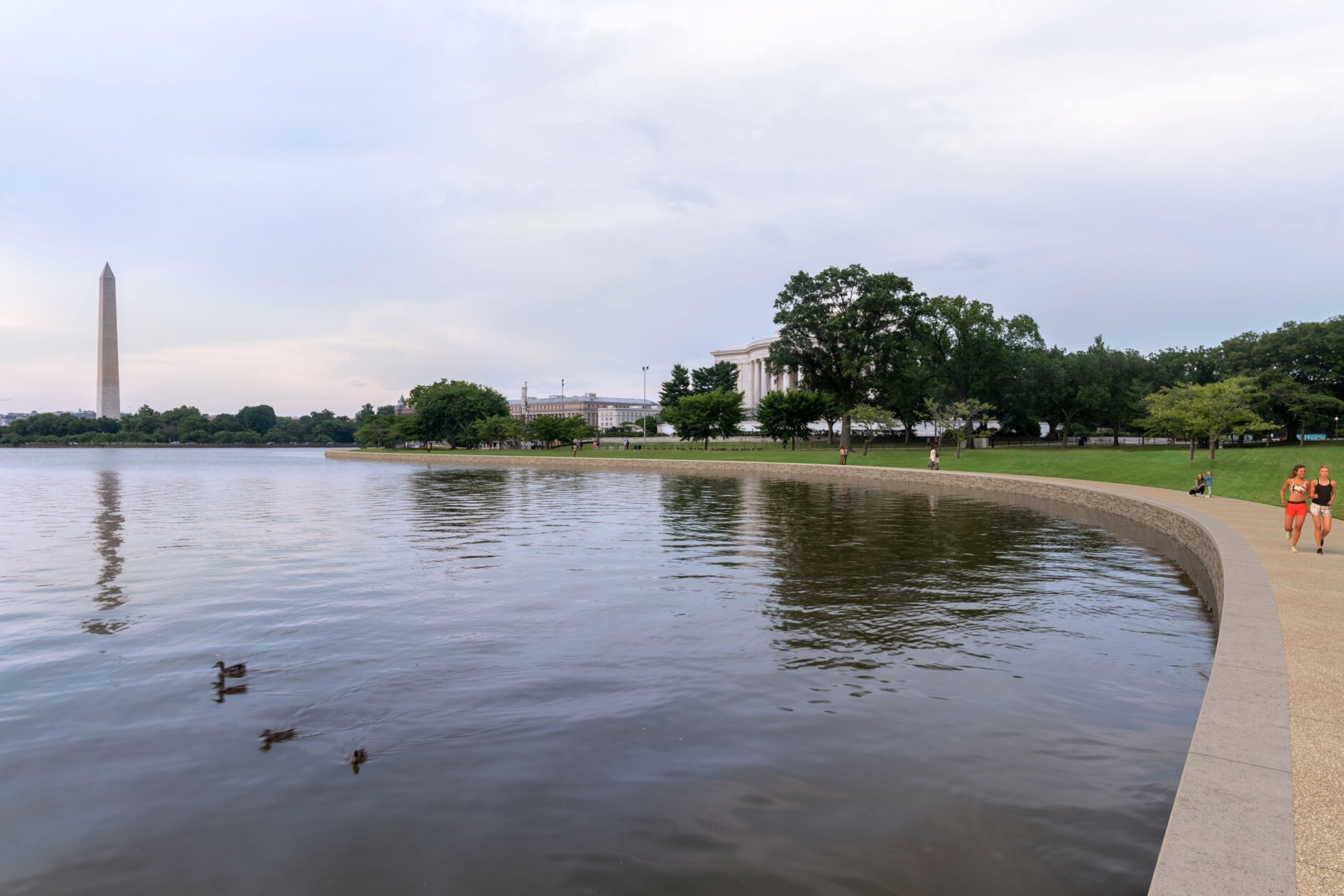
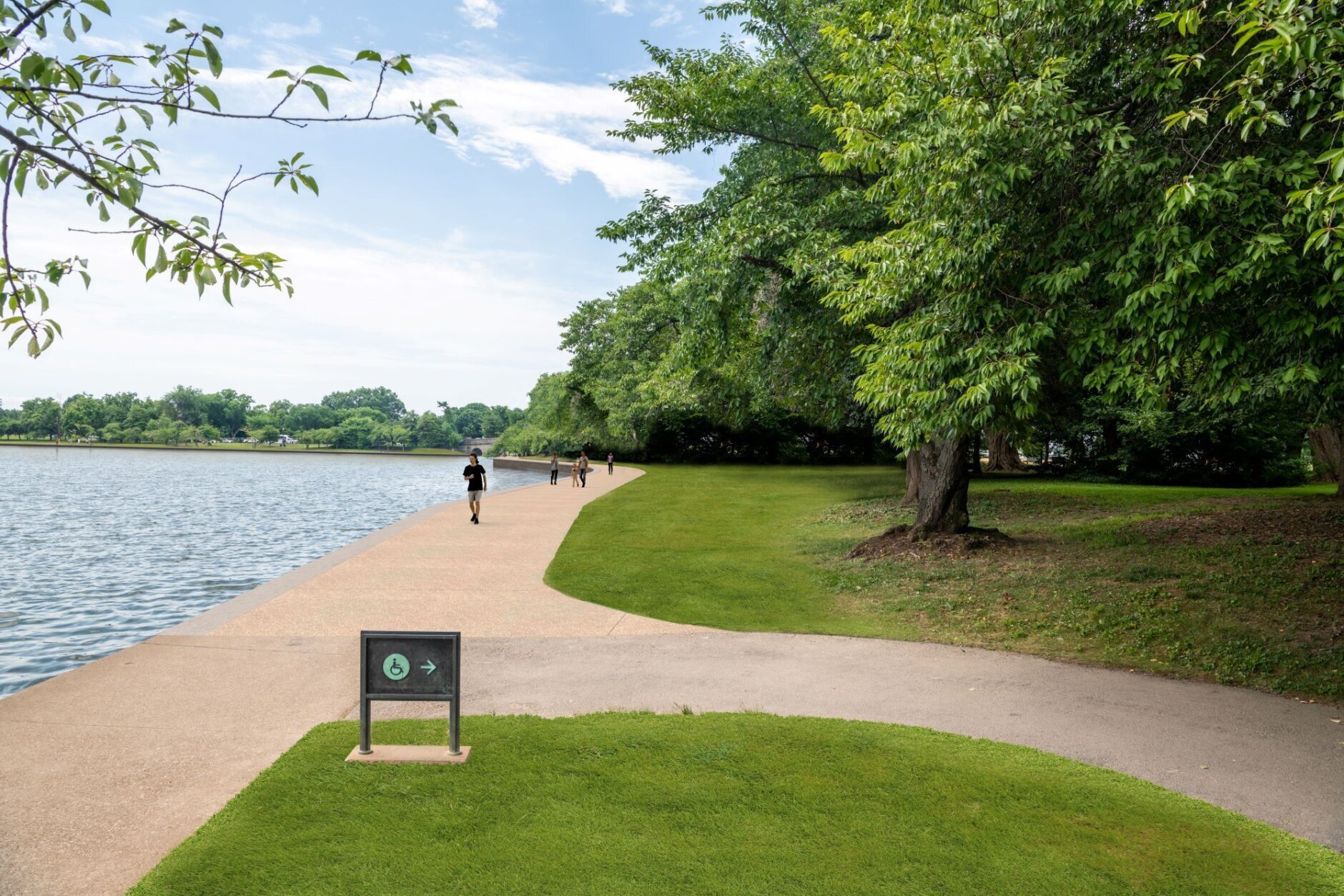
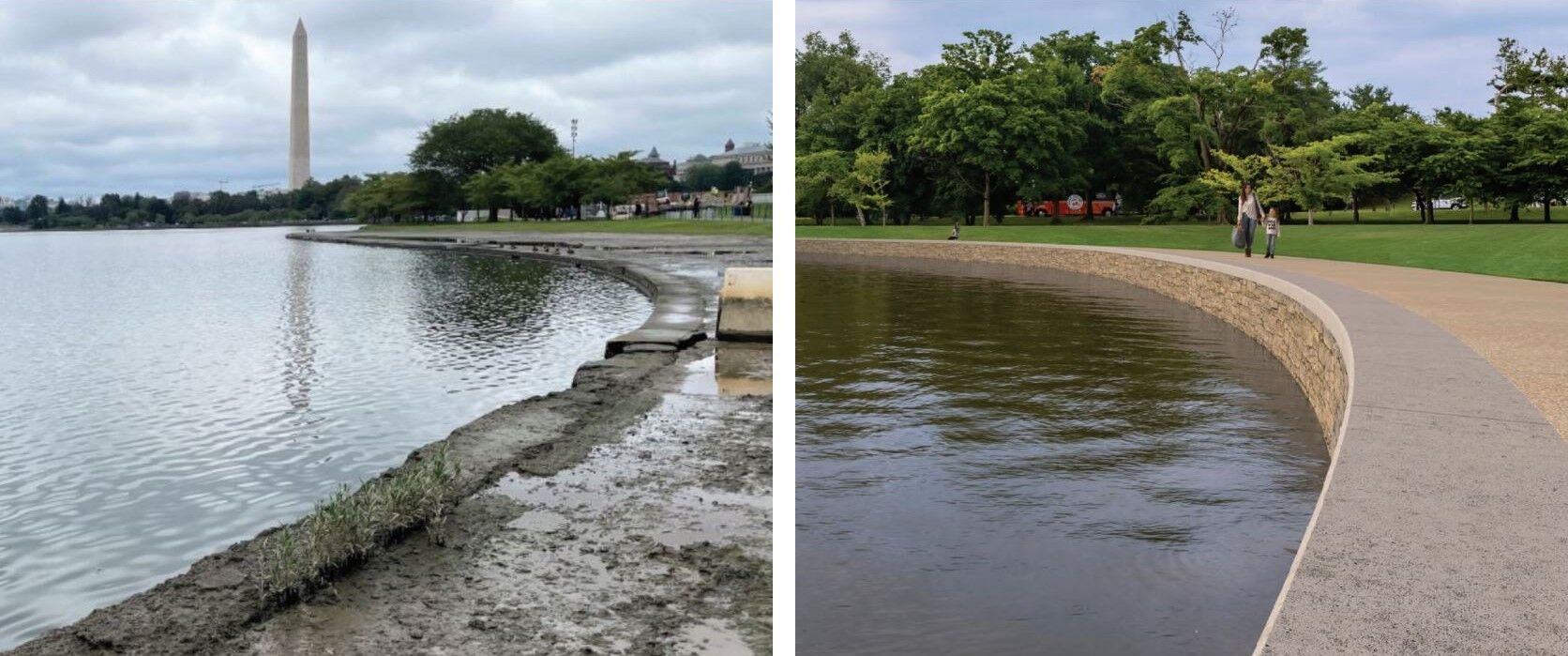
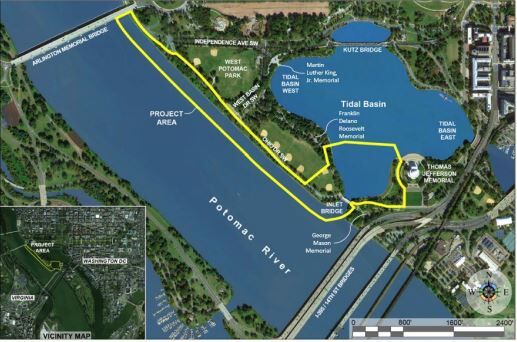
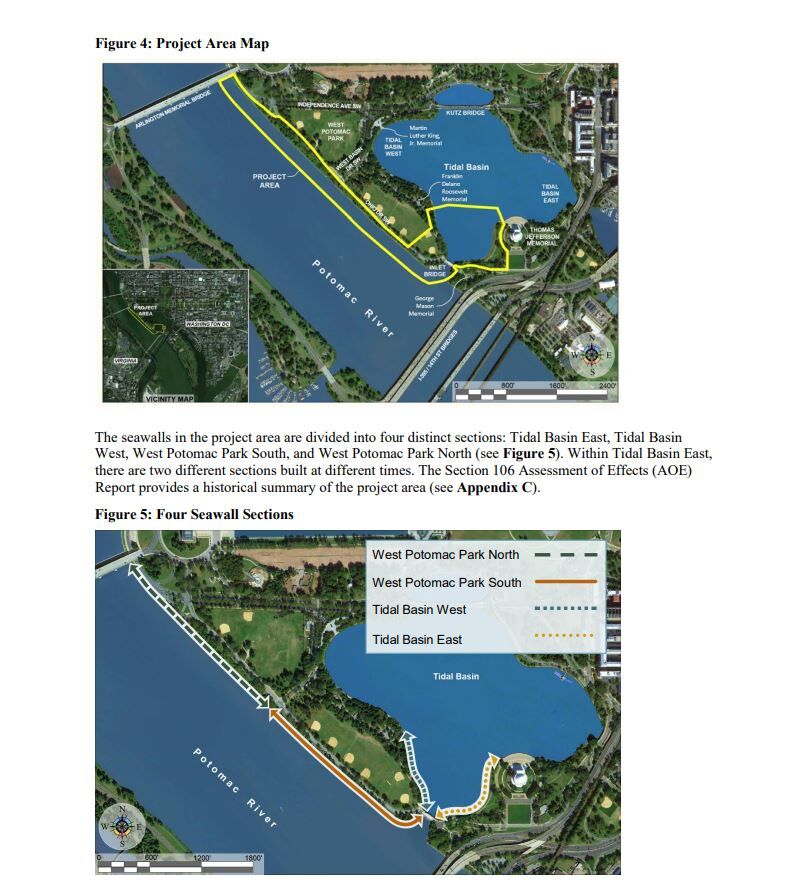
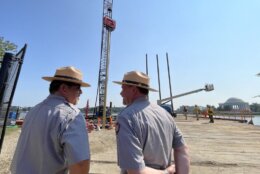
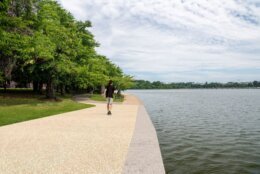
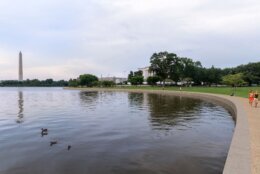
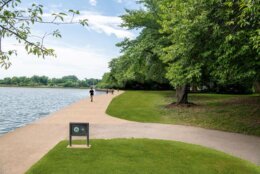
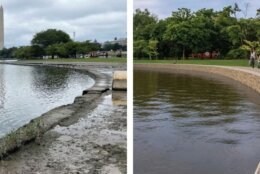
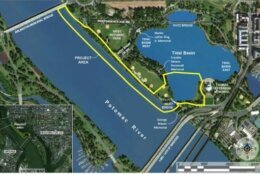
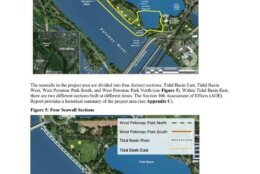
When the project is completed, “The restored and improved walkways improve the visitor accessibility and safety, which will allow them to concentrate on the beautiful cherry trees and the memorials around them,” said Jimenez-Pisani. The new walkways will be 4 feet wider than the current sidewalks.
With the flooding under control, the Park Service will “replant the many cherry trees that have died, due to the floodwater inundating their root system,” Jimenez-Pisani said. “We will have created an environment where the cherry trees can not just survive, but thrive, without the negative impacts of the Tidal Basin’s brackish water.”
A construction barge erected in the Tidal Basin will serve as a floating work site for much of the work, along the edge of the southern 20% of the basin, between the FDR and Thomas Jefferson memorials.
Reinbold said the contract for the project is $113 million, “the largest design-build contract in the history of the National Park Service.”
For a transformational project, like the sea wall rehabilitation, “The Great America Outdoors Act has been a game changer,” said Reinbold. Congress enacted it in 2020.
“Supported by revenue from energy development — not taxpayer dollars — ‘The Great America Outdoors Act Legacy Restoration Fund’ provides the National Park Service with up to $1.3 billion each year, for five years,” said NPS Director Chuck Sams.
Jimenez-Pisani said the project is currently on schedule and on budget.
”Construction on the Tidal Basin will be completed by May of 2026,” he said. “Work will commence along the Potomac River at the beginning of 2025 and should be completed by winter of 2026.”
Get breaking news and daily headlines delivered to your email inbox by signing up here.
© 2024 WTOP. All Rights Reserved. This website is not intended for users located within the European Economic Area.


